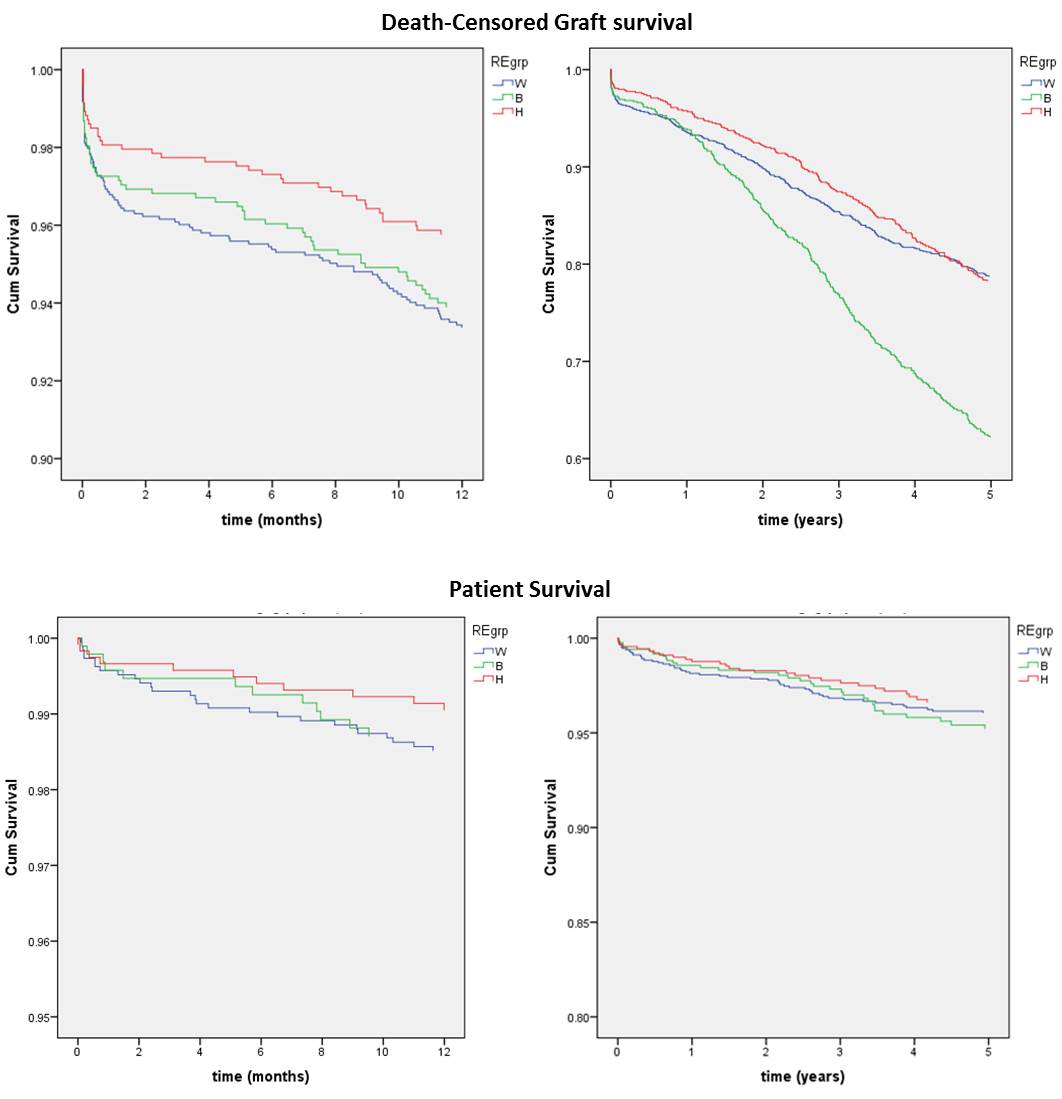Access to kidney transplantation for minority children with end-stage renal disease and predictors of outcomes
Trisha Blake-Popham1, David M. O'Sullivan2, Heather L. Kutzler1, Caroline L. Rochon1,3, Sherene Mason4,5, Robyn Matloff4,5, Glyn Morgan1,3, Patricia A. Sheiner1,3, Cynthia Silva4,5, Oscar Serrano1,3,4.
1Transplant Program, Hartford Hospital, Hartford, CT, United States; 2Research Administration, Hartford Hospital, Hartford, CT, United States; 3Surgery, University of Connecticut School of Medicine, Farmington, CT, United States; 4Pediatrics, Connecticut Children’s Medical Center, Hartford, CT, United States; 5Pediatrics, University of Connecticut School of Medicine, Farmington, CT, United States
Purpose: Racial disparities in access to kidney transplantation (KT) have been described among children with end-stage renal disease in the United States (U.S.). It has been suggested that these disparities stem from a combination of clinical and socioeconomic factors.
Methods: We evaluated data from the U.S. Scientific Registry of Transplant Recipients (SRTR) of all pediatric (<18 years old) KT recipients from 1999 to 2014 and compared outcomes by race or ethnicity: Hispanic, NHW, and non-Hispanic Blacks (NHB). We assessed 1- and 5-year patient survival (PS) and death-censored graft survival (DCGS). Donor and recipient characteristics controlled for included: living or deceased donor, brain-death or cardiac-death donor (DCD), recipient age, BMI, primary disease, re-transplant status, cPRA, HLA mismatch, graft rejection, and cold ischemia time (CIT). Cox regression analysis was used with an alpha level of 0.05.
Results: During the 15-year period, 11,740 (6,596 NHW, 2,306 NHB, and 2,838 Hispanic) pediatric KT recipients were performed in the U.S. Compared to NHW (250±335 days), NHB (294±348; p<0.001) and Hispanics (323±353; p<0.001) spent more time on the wait list. One-year PS for NHW, NHB, and Hispanics was 98.7%, 98.7%, and 99%, respectively; one-year DCGS was 95.7%, 94%, and 96.2%, respectively. Five-year PS for NHW, NHB, and Hispanics was 97.2%, 96.4%, and 97.5%, respectively; five-year DCGS was 86.1%, 70.8%, and 84.1%, respectively. Compared to NHW, at 5 years, NHB PS was significantly lower (p=0.031) and Hispanic PS was significantly higher (p<0.001). DCGS for NHB was significantly lower at 1 and 5 years (p<0.001, p=0.001, respectively) compared to NHW and Hispanics.

Multivariate analysis showed that higher recipient cPRA (HR 1.007, 95% CI 1.001-1013; p=0.027), greater HLA mismatch (1.165, 1.035-1.311; p=0.012), and rejection (4.276, 2.593-7.050; p<0.001) were associated with 1-year graft loss; older recipient age (1.058, 1.040-1.077; p<0.001), higher recipient cPRA (1.005, 1.001-1.008; p=0.004), longer CIT (1.008, 1.001-1.015; p=0.034), and rejection (2.173; 1.525-3.097; p<0.001) were predictive of 5-year graft loss. Patient survival was favorably affected by younger recipient age (0.874, 0.828-0.921; p<0.001) at 1 year, while negatively affected by re-transplant status (1.797, 1.133-2.852; p=0.013) at 5 years.
Conclusion: Although U.S. minority children have lower access to KT, outcomes suggest a disparate trajectory in outcomes with NHB demonstrating inferior DCGS while Hispanic children have comparable or better DCGS and PS outcomes, compared to NHW. Elucidating the clinical or socioeconomic roots of these differences may identify mitigating measures that can improve KT outcomes for these minority populations.